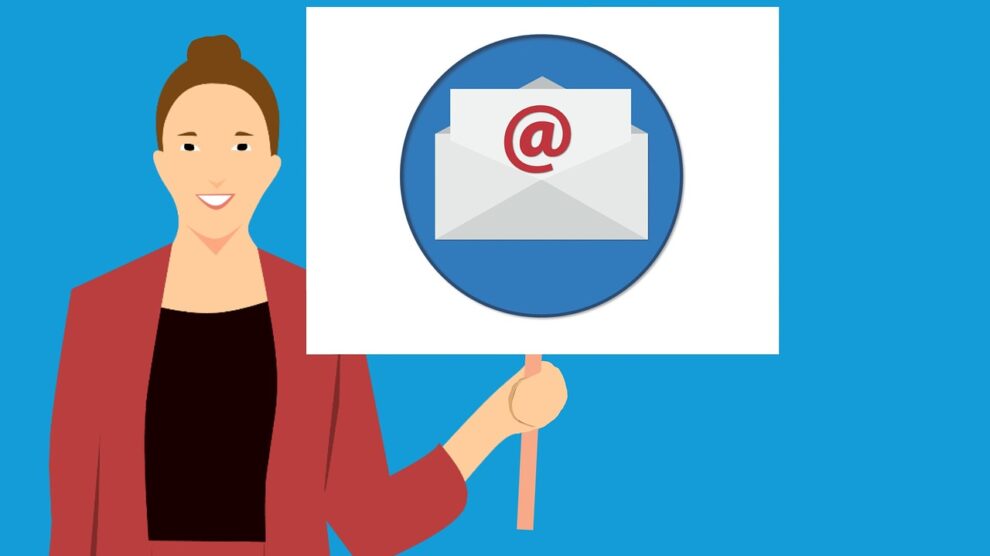If there’s one thing that is absolutely pivotal to fetching your campaigns surefire interaction and engagement, it is the quality of your email copy. Keep in mind that you are not the only brand that is communicating with your target audience; they’re also getting exposed to the campaigns of your competitors, tens and hundreds of them at that. So, in order to cut through the noise, your email needs to have an original voice and character. And that is something that can only be made possible by writing copy that is insightful, witty, and refreshing in the same breath.
Achieving that, however, as any email copywriter will tell you, is no child’s play. To write an email copy that is engaging and stirring requires you to both have a strong grasp over writing as a craft and be fluent with the nuances of email as a communication channel. You can build the template of your choice with a drag and drop email template builder, but writing a copy that is on the money is a whole different ball game altogether. But, don’t you feel overwhelmed by all that. We’ve got your back. In this blog, we’ll be sharing with you a host of best practices that will let you fine-tune your email copy and stand out from the crowd. Eager to find out what they are? Read on!
1. Make It Personal
Picture this- two emails arrive in your inbox, both are promotional in nature. One is written generically, talking about the business’ best-selling products and what makes them so sought-after, in the first place. The other contains products that are curated specifically for your taste, and talks about how they are the best fit for you based on your buying patterns in the past. Which email will have more of your attention? The answer spells itself out, doesn’t it. That’s the power of email personalization.
In this climate of information overload and email fatigue, readers are only willing to engage with emails that strive to foster a dialogue with them and ones that directly address their interests and preferences. To be able to get the spotlight successfully on your pixel-perfect email templates, you must begin with dividing your email list into different segments based on various parameters such as age, gender, occupation, past purchases, browsing patterns, position in the sales funnel, and the like. Doing so will allow you to identify the diverse buyer personas that are interacting with your brand and craft content appealing to each of their unique sensibilities. At the end of the day, the more relevant your content is, the better the results your campaigns will be able to drive.
Another personalization technique that can fetch you great dividends is using dynamic content. With the help of dynamic content, you can customize a particular section of your template differently for different customer segments. Imagine the superlative user experience that will help you drive! Now, there are quite a few ways to incorporate dynamic content into your email but one of the most convenient methods include using merge tags. They let you import data into your campaigns directly from your mailing list. Their appearance might vary from one ESP to another. For example, in Mailchimp, personalization strings are composed between “| |”. On the other hand, in Salesforce, they’re kept between “%% %%”. Normally, merge tags are inserted in the body copy but you can also place them in your subject lines and preview texts as well.
Customer data, goes without saying, is critical to designing impactful dynamic content blocks. Wondering what kinds of data you can utilize? Take a look:
- Expressed preference
- Past purchases
- Geolocation
- Gender, race, and ethnicity
- Past website interactions
- Past email interactions
2. Avoid Using Jargon
The primary purpose of email copy is to establish a connect with the reader. You stand to heavily endanger that by using jargon. This is a piece of advice you’ll be offered by every full-service email marketing agency out there. No matter how complex or sophisticated the scope of your product or service, never, ever resort to introducing industry jargon in your copy. It will instantly put off your readers. This tip is mostly directed at SaaS and B2B players where marketers might feel inclined to utilize technical terms to explain their offerings to their audience. But, here’s the thing: in order to use your product, your customer doesn’t need to know its working principle; they need to understand the real-life applications of its features. And that is something that can only be communicated in language that is simple and accessible.
While buying, let’s say, a refrigerator, do you concern yourself with the technical specifications of its compressor? No. Instead, you concern itself with the application it drives- the refrigerator’s levels of cooling. In object oriented programming, this philosophy is called encapsulation: hiding the complex working process of an entity and only revealing the functional aspect to the end-user. As an email copywriter, you stand to gain by leaps and bounds by internalizing this. At the end of the day, your foremost goal as a marketer should be offering clarity to your audience.
3. Take Your Subject Lines and Preview Texts Seriously
Given subject lines are the first things a recipient notices about your email, getting them right is of utmost significance. The merit of your subject lines will directly influence the opens and click-throughs your emails are able to register, which is why they’re treated with incredible gravity by agencies offering email marketing services. Writing a winning subject line is no walk in the park, of course, but thankfully there exist yardsticks to easen your pursuit of excellence. Let’s take a look at them.
- Firstly, pay attention to your subject line’s length. This is 2023, meaning your subscribers will be accessing your emails across both laptop and mobile devices. So, if your subject line doesn’t adhere to the prescribed limits, which is believed to be between 6-8 words, you risk spoiling your audience’s user experience.
- Work toward piquing the curiosity of your reader with your subject lines. Tell them just enough to garner their attention while simultaneously making sure to not divulge too much.
- Make sensory and action words the hallmark of your subject lines. This will help you coax out an emotional response from within them, thereby securing their interaction with your emails.
- Personalize your subject lines. And no, this doesn’t mean remaining confined to the “Hey XYZ” trope. That has become pretty dated. With a plethora of data at your disposal, you have the liberty to get quite creative with your personalization tactics. Mention the product that they browse-abandoned on your site, recommend another that aligns with their buyer persona, hook them with an update that is relevant to their location; you get the drift don’t you?
Your work, however, doesn’t finish at curating your subject lines. To amplify the effectiveness of your subject lines you need to follow them up with equally potent preview texts. By lending context to your subject lines, preview texts generate further interest in the reader’s mind, giving them an additional nudge to open your email. An ideal preview text is one that is successfully able to build upon the value proposition of the subject line it accompanies. Also, one needs to be mindful of the character limit of their preview text. If it is too short, it’ll end up absorbing characters from the email body, and if it is too long, it’ll be trimmed by the email client.
4. Prioritize Conciseness
There’s nothing that subscribers look forward to more than clarity in the communication they receive from their favorite brands. And a surefire way of delivering clarity is by laying heavy emphasis on brevity. Emails that are crammed with too much detail increasingly run the risk of getting overlooked by their recipients. Hence, the ideal course of action is to keep things crisp, to the point, and informative.
Additionally, pay attention to the structure of your copy as well. For starters, avoid using long and winding sentences; they severely undermine the readability of your copy. Steer clear of placing large blocks of text in the copy. Wherever possible, break your copy down into brief paragraphs and bullet points. To further enhance the clarity, use headings and subheadings.
5. Seal the Deal with Your CTAs
Your CTA copy can have a direct impact on your email’s conversion rates. Keep the following points in mind while writing one.
- Ensure the tone of your CTA agrees with the rest of your email copy. Having an informal CTA accompanying a copy that is postured formally will come across as extremely incongruous.
- A CTA button has modest dimensions, making it necessary for the content it holds to be succinct in nature. So, make certain your CTA doesn’t extend beyond 2-4 words.
- Your CTA should read such that it gives subscribers an exact idea of where they’ll be led to or what action they’ll be accomplishing upon clicking on it. Functionality, thus, needs to be the core value around which you need to frame your CTA copy. Often in a bid to be clever and charming, brands end up putting clarity in the backseat. Sure, phrases like “Shop Now”, “Download”, and the like might not sweep you off your feet, but they go down as excellent CTA examples purely on account of their unambiguity. Of course, if you’re able to organically work in wit and humor into your CTA, don’t hold back. As long as it is not coming at the expense of clarity, you’re good.
Wrapping It Up
The more you dive into email copywriting, the more you’ll discover about it. The techniques shared above aim to give you a solid foundation regarding it. Feel free to scan through the marketing emails and newsletters of the best brands out there to further build up on the insights we have shared above!





